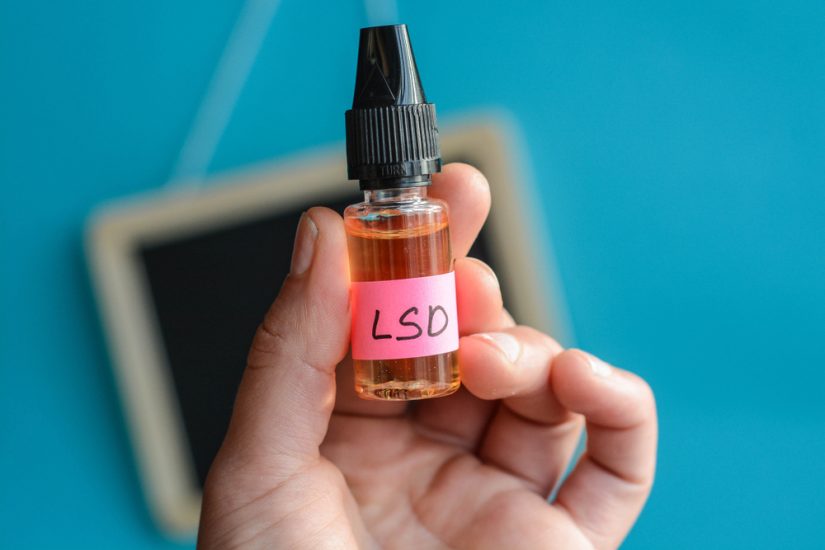- November 13, 2024
- by Harshita Bajaj
- Addiction
Table of Contents
Transfer addiction is also known as cross-addiction, a condition in which an individual, during or after recovery of a particular addiction, substitutes another addiction with it. In other words, when one form of dependency is traded for another, it is called transfer addiction. This is a common response or condition observed and can manifest as behavioral or substance addictions.
Further, this transfer or substitution is driven by a pursuit to get dopamine-induced pleasure (the brain’s reward system neurotransmitter) but from a different source or a source that is perceived to be relatively healthier.
In transfer addiction, the shift or substitution may be unconscious, a way to cope with the underlying issues that originally contributed to the primary addiction and it can be seen as a hindrance to the recovery process on top of the adverse impact on mental health and well-being.
Transfer addiction can manifest in two different ways which include the following, most common ways an individual would transfer addiction are:
Substance Substitution: This involves substituting with substances other than the primary or original addiction. For example, a person recovering from alcohol abuse may develop a reliance on nicotine, tobacco, or pharmaceutical drugs or vice versa.
Behavioral Replacement: This involves substituting with mind-numbing, thrill-seeking or risky activities such as compulsive exercise, shopping, gambling, technology addiction or excessive screen time (gaming, social media), overeating or binge eating, overworking, pornography, to seek escape or feelings of reward that was previously sought.
Let’s explore the most common forms of transfer addiction:
Alcohol Transfer Addiction
Alcohol transfer addiction occurs when one shifts from a primary addiction (for example, gambling, food, drugs) to alcohol as a substitute. This is especially applicable in cases where the primary addiction is no longer available, such as for individuals who undergo bariatric surgery, since food is no longer a viable option for comfort due to physical and dietary restrictions post-surgery, many turn to substances like alcohol or engage in addictive, harmful or compulsive behaviors. This is also common in individuals with substance use addictions as often while recovering from substance or drug dependencies, one may engage in alcohol abuse to chase the high or intoxicating feeling.
Bariatric Transfer Addiction
Bariatric transfer addition is a form of addiction transfer that can occur in bariatric or weight-loss surgery patients. The patients often seek other outlets post-surgery that comes with dietary restrictions, developing alcohol dependency, substance use dependency or other harmful behavioral addictions.
After bariatric surgery, the way the body processes dopamine can change, leading to increased cravings, seeking substances or behaviors that are addictive and stimulate the release of dopamine. It is also found that 30% of these patients develop a new addiction post-surgery, where 8% of these patients develop Alcohol Use Disorder (AUD) post- surgery.
Technology Transfer Addiction
Technology transfer addiction occurs when individuals transfer a former addiction to compulsive use of technology. This includes spending excessive time on social media, video games, internet gaming, internet gambling, pornographic sites, or other digital platforms. As technology, social media and the internet provides a great deal of escape and temporary relief it becomes a way of coping with stress or emotions after recovering from an addiction for some.
What are some red flags or signs of transfer addiction?
- Obsessive thoughts about new behavior, activity or substance and feeling compelled to engage in it
- Neglecting responsibilities and difficulty in concentrating on tasks
- Neglecting personal hygiene, self-care and overall health
- Increased stress and anxiety, negative feelings and thoughts
- Abandoning regular schedule, activities and interests for the new addiction
- Negative interference with interpersonal relationships, work or school
There is usually a combination of factors that can lead to a transfer addiction in place of a complete successful recovery in a client, such as unresolved underlying issues that caused the primary addiction, lack of coping skills or social support, trauma, mental health issues, as well as changes in brain chemistry i.e., seeking dopamine. According to research, individuals with a history of addiction, bariatric surgery patients, women, adolescents and young adults are more susceptible to transfer addiction. However, identifying signs of transfer addiction can help in prevention and timely intervention. Let’s take a look at treatment strategies.
Treatment and Intervention for Transfer Addiction
Treating transfer addiction involves an intervention for both the original addiction along with the new dependency which includes a holistic approach including therapy, social support and lifestyle changes.
Therapy and Counseling is often employed in the therapeutic intervention of transfer addiction, especially Cognitive Behavioral Therapy (CBT) as it is widely used to address addictive behaviors. Therapeutic techniques of motivation and habit building, mindfulness and stress management, coupled with psychoeducation and counseling to reintegrate back into a life without addiction would be beneficial.
Support Groups and Peer Support is a crucial aspect of addiction treatment to provide peer support or therapist guided support to share experiences and coping strategies such as Alcoholics Anonymous (AA), Narcotics Anonymous (NA), SMART Recovery support groups for addicts and their families,
Addiction Technology Transfer Centers (ATTCs) are centres providing invaluable resources and training to professionals working in addiction treatment. These centers equip and train therapists with the latest method, information for preventing and addressing transfer addiction and recovery services.
The ATTC network was established by the Substance Abuse and Mental Health Service Administration (SAMHSA) to provide free training, tools and support to professionals to provide evidence-based addiction treatment and recovery support. Herein technology transfer (from research to practice) involves development of tools using evidence-based practices that are easy to use by practitioners and ensuring all professionals have access to these tools and have been trained to efficiently and effectively utilize them.
There are ATT centres spread throughout the US that are working towards ensuring the best possible support is given to patients of addiction treatment.
If you or someone you know is struggling with an addiction or transfer addiction it is vital to make use of available resources near you such as getting in touch with an Addiction Technology Transfer Centre (AATC) which can provide guidance and connect you with specialized care. At North America Behavioral Health Services, we help you connect with the right resources and centres for your recovery journey! While addiction and transfer addiction causes significant harm to physical and mental health of an individual, with early identification or the right support, one may break free from the vicious cycle of addiction and live a healthier life.
Are you or someone you know struggling with transfer addiction?
















